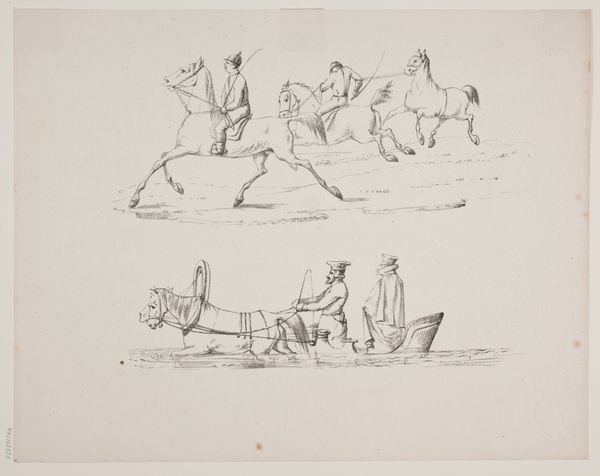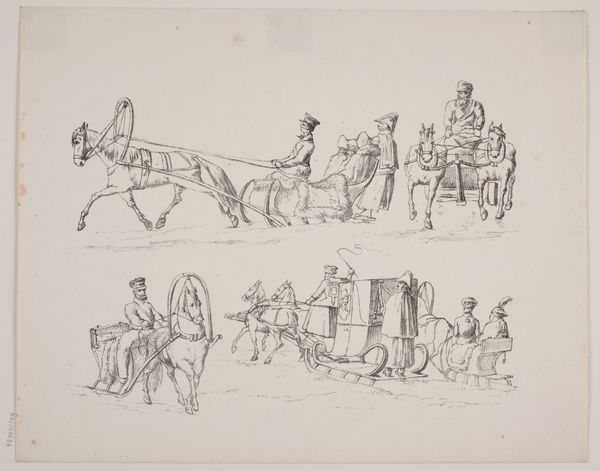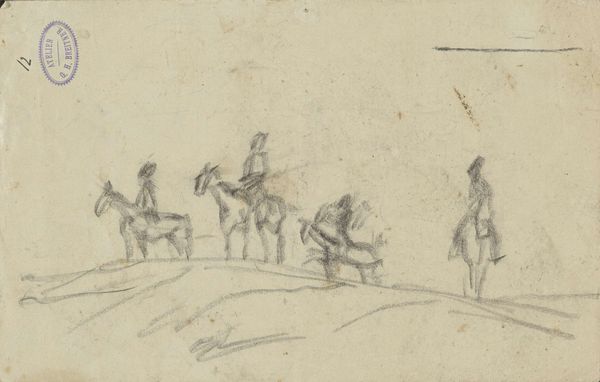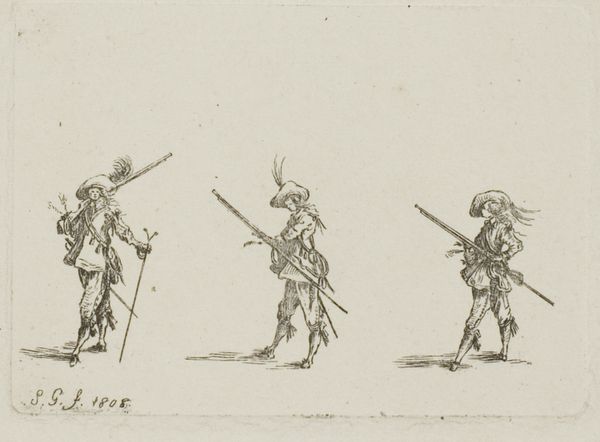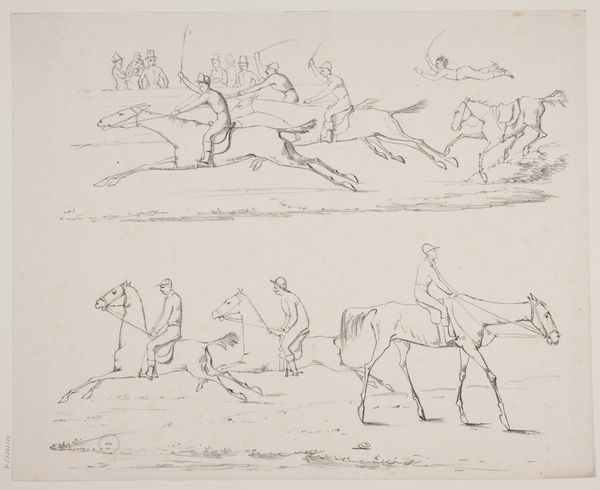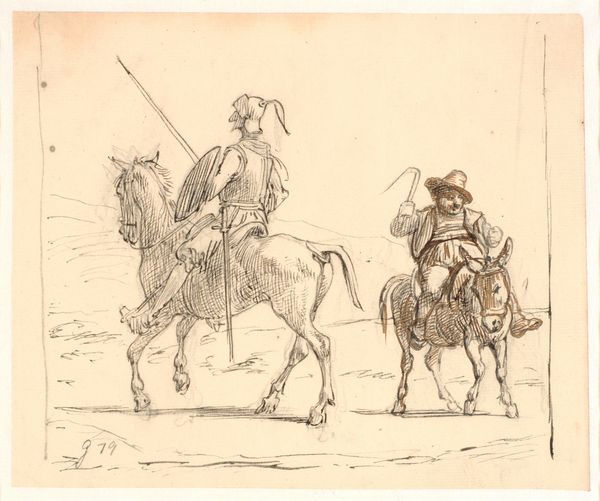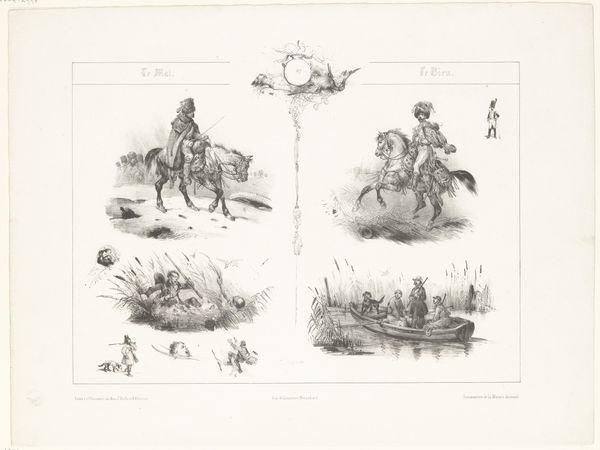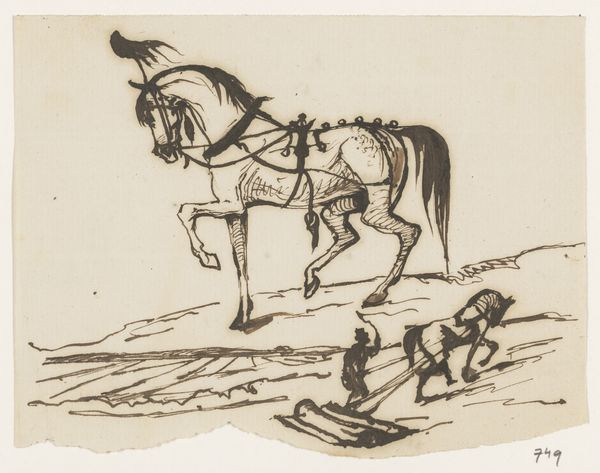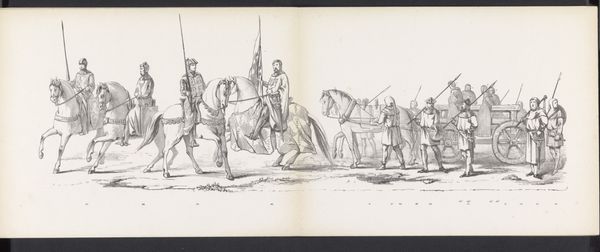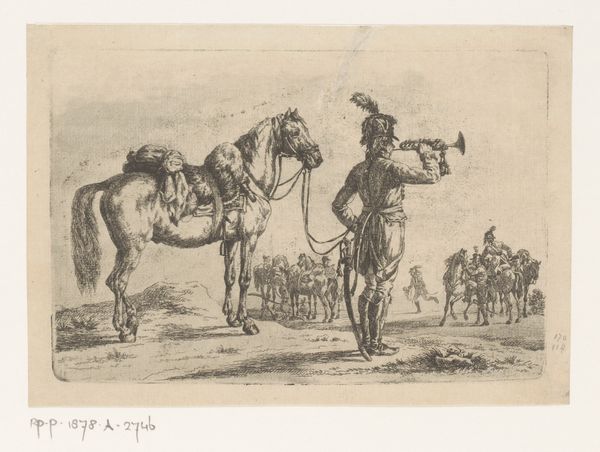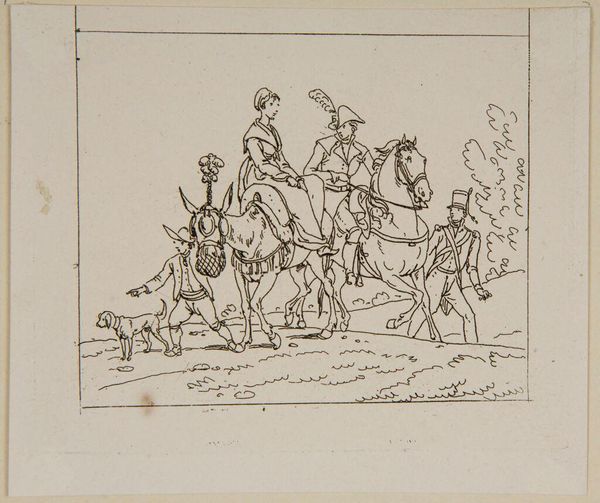
drawing, lithograph, print
#
drawing
#
narrative-art
#
lithograph
# print
#
figuration
#
line
Dimensions: 261 mm (height) x 331 mm (width) (bladmaal)
Curator: Here we have "Prøveblad med riddere i harnisk," which translates to "Sample Sheet with Knights in Armour," a lithograph drawing from the period 1795 to 1854, housed here at the SMK. It’s attributed to N.B. Krossing. Editor: It has an ethereal, almost unfinished quality to it. The light washes and delicate line work give the piece a kind of transient feel. Are we certain about the production process? Curator: The museum’s records indicate that it is a lithograph print. This technique allows for multiple impressions, possibly suggesting it was part of a larger series intended for study or reproduction. Consider the socio-political ramifications tied to reproducible image-making during this period. Editor: That raises interesting questions. What kind of labour was involved to bring these knights into existence? What would their roles be in the period depicted? Were they models or caricatures? Also, I notice each knight's posture is carefully calibrated—perhaps it’s trying to convey distinct characters. The plumes, shields, and spear angles all have specific formal qualities. Curator: Precisely. The use of line dictates the narrative—note the rhythmic interplay between dark and light, particularly in delineating the figures’ contours against the negative space. We might posit a structural interpretation based on these arrangements. Editor: Well, it begs the question if the choice of lithography was strategic. Was the artist involved in the process or outsourcing it? Was it about cheaper and faster outputs, intended to flood the market? We need to address not just how it looks but how it came to be materially and how that connects to the burgeoning industrial production of art at the time. Curator: Certainly, a contextual material analysis broadens the artwork's meaning. Still, from a formalist lens, Krossing’s skill in evoking dynamism within a static medium warrants recognition, it has almost the suggestion of movement despite its lithographic flatness. Editor: Agreed. Considering this sheet may have served as a prototype, we see that sometimes the art resides within the labor itself. It's fascinating to glimpse the intersection of artistry and process.
Comments
No comments
Be the first to comment and join the conversation on the ultimate creative platform.
